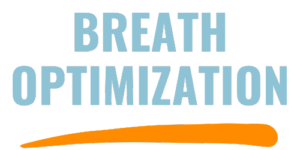
Most people think of breathing as an automatic process—something the body does without conscious effort. While this is true, breathing is also a learned behavior, meaning the way we breathe is shaped by our experiences, habits, and even emotional states. Dysfunctional breathing patterns can develop over time, leading to physical, cognitive, and emotional challenges that many people don’t realize are linked to their breath.
Breathing Behavior Analysis is a science-based approach, enhanced by biofeedback technology and somatic experience, that examines how, when, and why we breathe the way we do and helps individuals retrain their breathing for better health, mental clarity, and overall well-being. This method goes beyond traditional breathwork by identifying habitual breathing patterns, underlying triggers, and the reinforcement mechanisms that sustain them.
What is Breathing Behavior Analysis?
Breathing Behavior Analysis is the study of physiological and psychological learned breathing habits. Rather than focusing solely on the mechanics of breathing, this approach explores:
- Triggers that influence breathing patterns (e.g., stress, trauma, lifestyle).
- Reinforcement mechanisms that sustain dysfunctional habits.
- The interplay between breathing and the autonomic nervous system.
By using assessment tools such as Capnometers (to measure CO2 levels), HRV monitors, and Oximeters, a Breathing Behavior Analyst can gather data to identify where and why breathing patterns are disrupted. The goal is not just to change the way someone breathes in the moment but to retrain long-standing habits for long-term health improvements.
Breathing vs. Respiration: Why the Difference Matters
Many people use the terms “breathing” and “respiration” interchangeably, but they are distinct processes with different objectives:
- Breathing refers to the mechanics of moving air in and out of the lungs. This can be influenced voluntarily (e.g., deep breathing exercises) or happen automatically.
- Respiration is the gas exchange that occurs within the body, involving oxygen (O₂) intake and carbon dioxide (CO₂) release. This process is crucial for maintaining proper chemical balance in the blood.
When breathing mechanics and respiration are misaligned, health problems can arise. For example, habitual overbreathing (breathing too fast or too deeply) can lower CO₂ levels, leading to hypocapnia, which is linked to dizziness, brain fog, and anxiety. Breathing Behavior Analysis helps identify and correct these imbalances for optimal health.
Signs of Dysfunctional Breathing
Dysfunctional breathing patterns can manifest in a variety of ways, often mimicking other health conditions. Common signs include:
- Physical symptoms: Chest tightness, dizziness, tingling sensations, muscle tension, or frequent sighing.
- Cognitive symptoms: Brain fog, difficulty focusing, memory lapses, and mental fatigue.
- Emotional symptoms: Increased anxiety, mood swings, irritability, or feeling overwhelmed.
Many people experiencing these symptoms may mistakenly attribute them to other health issues and seek unnecessary treatments. However, in many cases, breathing habits are the root cause—and they can be changed.
Breaking the Cycle: How to Retrain Your Breathing Patterns
Since breathing is a learned behavior, it can be unlearned and retrained. The process of retraining dysfunctional breathing habits involves:
- Identifying Triggers – Understanding what situations, emotions, or physical states cause dysfunctional breathing..
- Negative Practice – Intentionally lowering CO₂ levels in a controlled setting to help clients recognize their unique symptoms and build awareness of their breathing patterns.
- Breath Retraining Strategies – Implementing exercises to restore proper breathing mechanics and alignment with respiration.
- Self-Regulation Techniques – Learning how to maintain healthy CO₂ levels, improve oxygen efficiency, and reduce stress responses.
By working with a Breathing Behavior Analyst, individuals can receive personalized assessments and strategies to break free from dysfunctional breathing patterns and optimize their health.
Conclusion: The Power of Changing Your Breath
Breathing is more than just a biological function—it is a powerful, programmable behavior that directly impacts your health, emotions, and cognitive function. By analyzing and retraining breathing habits, individuals can experience improved focus, reduced anxiety, better sleep, and enhanced overall well-being.
If you’ve been experiencing symptoms that may be linked to dysfunctional breathing, consider working with a Breathing Behavior Analyst to assess your patterns and begin retraining your breath. Your health—and your performance—depend on it.
Ready to take control of your breath and improve your well-being?
📅 Book a breathing assessment today!


